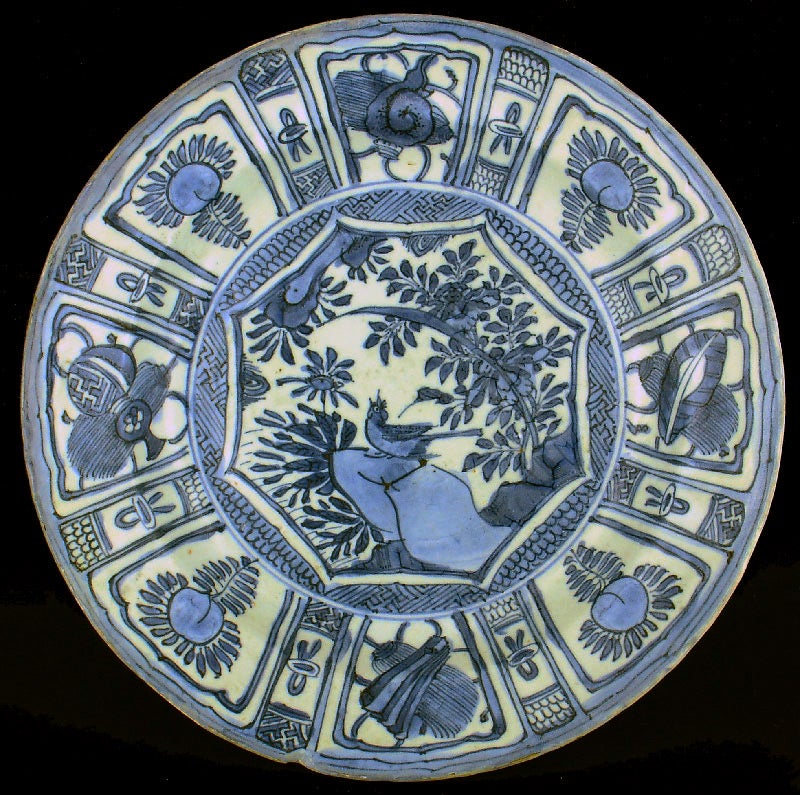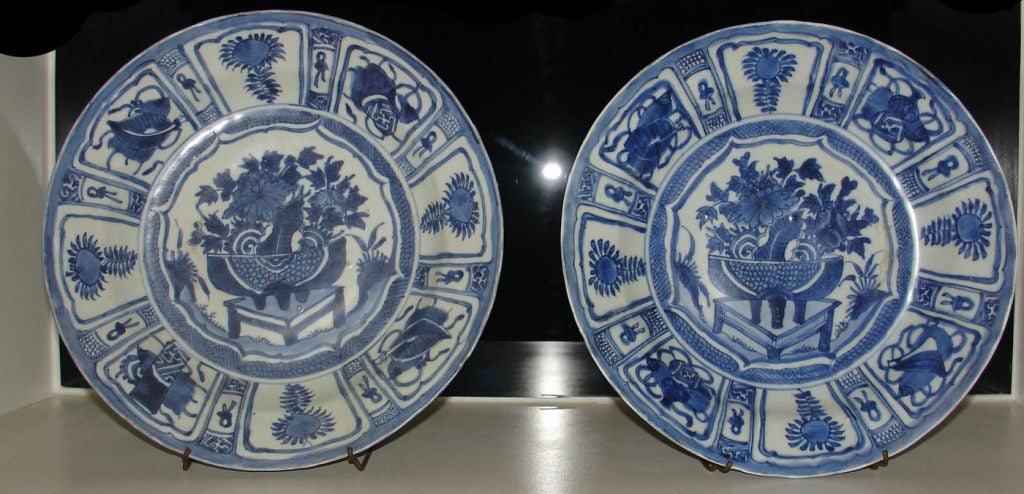
Large Diameter Kraak plate, bird on a rock
Recovered from the Wanli shipwreck (ca. 1625) by Sten Sjostrand
29 cm (11.5 in.) in diameter
Provenance: Nanhai Marine Archeology (Sjostrand Collection) W-755
Coppola Collection
This large diameter kraak plate features a bird on a rock below a flower arrangement. With these motifs, the artist conveys the meaning of chum gung Chang shou, which refers to “spring time and longevity” in the Chinese. This is a motif that was popular during the Ming Dynasty. Together, these motifs connote a blessing for vibrant youth, healthiness, and long life. The designs are quite crisp, well-drawn, and stand out against the white background. The plate is completely intact and there are no “tender edges” (chips of the glaze) along the rim. There is a small dent baked into the shape (maybe an original thumbprint in the outer rim), which, all things considered, is pretty cool.
In the year 1625, a Portuguese vessel set off from China on a voyage to the Straits of Melaka. Onboard were tons of chinaware and pottery that would bring lucrative profits for the Portuguese.
However, the ship now named “Wanli” never reached the Portuguese fort of Melaka as she sank half way sailing through the South China Sea. The wreckage was discovered buried deep in the ocean off the coast of Terengganu, together with her precious cargo, six miles off the east coast of Malaysia after pottery appeared in fishermen’s nets in 1998.
The ship was found six years later, loaded with blue and white antique Chinese porcelains belonging to the Ming Dynasty, the ruling dynasty of China from 1368 to 1644. The vessel became known as the Wanlishipwreck after the recovered ceramic was assigned to Guangyinge site in the town of Jingdezhen during the reign of Emperor Wanli (1573-1620).
Kraak porcelain (Dutch Kraakporselein) is a type of Chinese export porcelain produced mainly from the Wanli reign (1573–1620). It was among the first Chinese export ware to arrive in Europe in mass quantities, and was frequently featured in Dutch still life paintings of foreign luxuries.
Strictly defined, it “is distinguished by the arrangement of its ornament into panels; these usually radiate to a bracketed rim notorious for its liability to chip.” It is mostly made as deep bowls and wide dishes, decorated with motifs from nature, in a style not used on wares for the domestic Chinese market.
The term Kraak porcelain is thought to be derived from the Portuguese ships (Carracks) in which it was transported. Kraak ware is almost all painted in the underglazed cobalt blue style that was perfected under the Ming dynasty.







